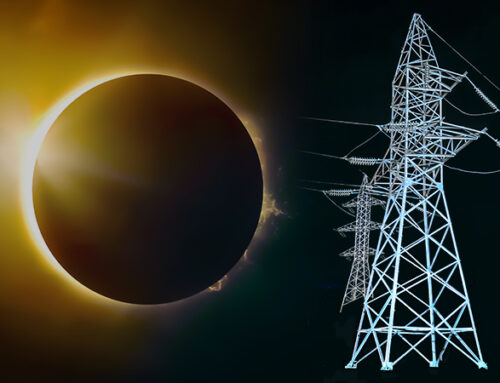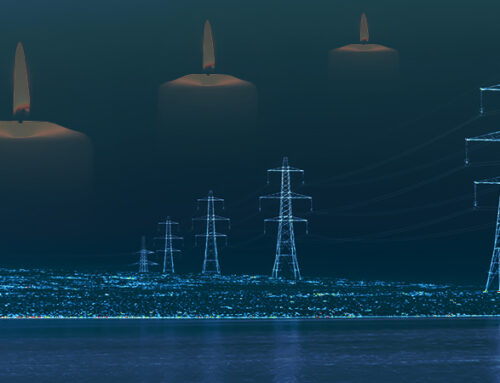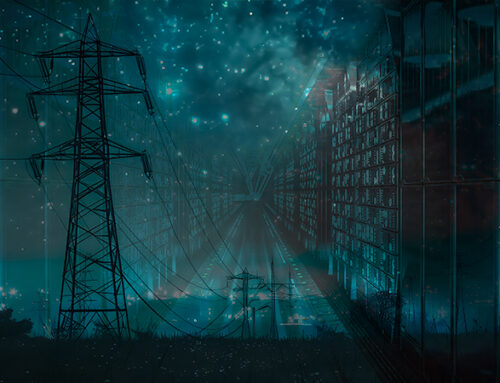This month, Statkraft and ABB announced the construction of two synchronous condensers on Lister Driver in Liverpool. The Lister Drive project will provide a range of grid stabilisation services to National Grid ESO, including inertia, short circuit current and voltage control. Grid stability in the area was previously supported by the Fiddler’s Ferry coal-fired power station which closed in March 2020. The contract with ABB is over ten-years and the £25 million project is due to begin operations later this year.
Last year a similar grid stabilisation project was announced for Rassau in Wales. The scheme which comprises a synchronous condenser and flywheel is a collaboration between Welsh Power, Quinbrook, National Grid ESO, Siemens and Western Power Distribution, is due to come online by autumn 2021.
“Within 15 minutes of an instruction, our facility can provide approximately 1% of the inertia needed to operate the grid safely – with zero emissions,”
– Chris Wickins, director of grid services at Welsh Power
Why are these schemes suddenly gaining interest?
The electricity system is changing. The growth in renewables and the decline in traditional generation isn’t just decreasing the carbon content of electricity, it is also reducing the amount of inertia on the grid – the property of large, heavy turbines which resist changes to grid frequency. This isn’t just a quirky bit of physics, the frequency of the electrical oscillations of the electricity system must stay within a narrow band (50 Hz ±1%) otherwise electrical equipment can trip.
Renewable generators also cannot supply reactive power to the grid. Reactive power occurs when current becomes out of phase with voltage in ac systems, and oscillates inside the circuit in a similar way to a pendulum, with energy being absorbed in and released from the magnetic fields created by electrical equipment. However, reactive power does not travel well so unless it is minimised within electrical systems, components can become over-heated leading to voltage instability.
Thermal power stations traditionally provided reactive power as well as inertia, and this also needs to be replaced as the energy transition progresses. Grid operators can use static or dynamic reactive power compensating devices. Static devices such as capacitor banks are relatively low cost but are slow to respond, and their output drops when voltage drops. They can also take up lot of space.
Other static devices include static var compensators – switches made of shunt capacitors and reactors connected by thyristors (solid-state semiconductor-based switches). These offer more voltage control than capacitors and can absorb and supply reactive power, but their reactive power output varies according to the square of the voltage, so they struggle to operate in conditions of voltage instability. Static Compensators (“STATCOMs”) are shunt devices which use force-commutated power electronics to control power flow with fast response times in microseconds. They need much less space than capacitors, but are about 20% more expensive.

Dynamic devices include synchronous condensers which can continually adjust their output level in tiny increments to smoothly balance the system. National Grid is beginning to use synchronous condensers to meet these inertia and reactive power needs. These can be either existing generators that turn without generating electricity, or purpose built machines which can never generate power. These purpose-built machines are sometimes fitted with flywheels to increase their mass and therefore their inertia.
The idea of synchronous condensers is not new – in the 1960s and 70s some substations deployed stand-alone synchronous condensers, and in the early days of electricity, they were used quite widely, but once synchronous grids were established, they were considered to be obsolete and largely fell out of use.
Synchronous generators can be adapted to also operate as synchronous condensers by installing a synchronous self-shifting clutch between the turbine and the generator. In this scenario, the turbine brings the generator up to speed, enabling it to synchronise with the grid. At this point, the turbine disconnects from the generator with the generator using grid power to keep spinning. The clutch disengages the prime mover and the generator when reactive power is needed, and re-engages for power generation when real power is needed.
.
As the electricity transition progresses and traditional generation is increasingly replaced by asynchronous renewable generation, technologies such as synchronous condensers will be more widely used.






So, how many of these will they need to cover a ROCOF event,, say an 1800 MW reactor trip of Hinkley C ?
Let’s presume the AGR’s are all closed, and Sizewell is the only other remaining synchronous generator connected.
The wind is blowing hard and no CCGT’s are needed.
They will need a lot of these !
I think the answer is “a lot”. But I’d also say that your scenario is quite a way away – even without a trip I don’t know that the grid would be stable with only Sizewell and HPC with wind – voltage has to be stable everywhere, which needs more than an average balance of supple and demand across the grid as a whole. Even if CCGTs aren’t needed for energy, they can and do run concurrently with wind generation being curtailed because of their contribution to grid stability, constraint management and so on.
Its an old idea – back in the 1960s I aksed why a research aircraft was running rotary up converters to power its mains voltage equipment instead of transistor inverters.. ‘Have you seen what happens to a 48V supply when you pull up the wheels and flaps?” – the Rotary converter powered through what amounted to a serious brownout.
It would be completely possible to use rotary converters post semiconductor inverters to feed the grid from any intermeittent renewable or DC interconnector, but of course it costs money….
Bit by bit eberything you got free on a fossil or nuclear generator is being added back at extra expense to the so called cheap renewables
– long term storage like hydro and punped hydro to replace fuel rods or piles of coal or gasometers of gas
– medium term storage to replace boilers full of steam
– short term storage to replace spinning mass.
When people tell you renewables are now competitive, ask them why their electricity bills have trebled in the last 20 years in real terms.
I don’t think (and never have) that renewables are either cheap or competitive. Unfortunately there is a huge investment bubble in renewables which is hugely distorting the picture. The claims around renewables remind me a lot of the early dotcom years when apparently intelligent and experienced financiers were convinced that the size of the economy would grow because people would buy things online: AS WELL AS buying them offline, and we all know how that turned out!
As someone who avidly reads this blog to keep myself informed about the broader issues of the electricity/energy system I was pleased to see a post on synchronous condensing and then delighted to see you mention the synchronous self-shifting clutch. As Managing Director of SSS Gears, the maker of such things, I have to admit an interest!
Much as I would like to bombard you with details other solutions to these challenges (all with clutches) I will bite my lip as it would certainly be abuse of your system.
Thank you Kathryn! The blog is always informative and interesting.
Thanks James, that’s nice to hear. As so many thermal turbines are retiring from generation there could be growing demand for your clutches! I’ll watch with interest…
I too read with interest your blog about synchronous condensing, having worked for forty+ years supplying interposition synchronous self shifting clutches which have been installed between peak load turbines and generators to enable synchronous condensing when not generating electricity. Kathryn, your comment about retired thermal plant conversion is a good one but we have also added acceleration systems with clutches to thermal (steam turbine) generators that are used seasonally for power generation.
When the generator is generating power it can also provide reactive power. When this plant stops you get neither power nor reactive power. With a clutched acceleration system at the exciter (free) end of the generator, and manually disconnecting the turbine from the generator, reactive power can be made available year-long. We just participated in this type of conversion for two 600 MVA steam turbine generators near Amarillo, Texas which previously only generated power six month’s of the year and have done a number of other large units previously.
I enjoy your articles; keep up the informative good work.
This month, Statkraft and ABB announced the construction of two synchronous condensers on Lister Driver in Liverpool. Grid stability in the area was previously supported by the Fiddler’s Ferry coal-fired power station which closed in March 2020.
Yes, there’s a flurry of news about this installation this week, possibly because on-site work is expected to start this month. There’s a good article from New Power that’s worth a read:
https://www.newpower.info/2021/05/synchronous-condensors-ready-to-roll-out/
The electricity system is changing. The growth in renewables and the decline in traditional generation isn’t just decreasing the carbon content of electricity, it is also reducing the amount of inertia on the grid – the property of large, heavy turbines which resist changes to grid frequency.
This month, Statkraft and ABB announced the construction of two synchronous condensers on Lister Driver in Liverpool. The Lister Drive project will provide a range of grid stabilisation services to National Grid ESO, including inertia, short circuit current and voltage control. Grid stability in the area was previously supported by the Fiddler’s Ferry coal-fired power station which closed in March 2020.
Synchronous condensers enhance grid stability in Great Britain by providing reactive power support, voltage regulation, and inertia. They help balance fluctuations, improving power quality and resilience against disturbances, making them essential for a reliable and efficient electricity network.
Synchronous condensers play a crucial role in stabilizing the GB electricity grid by providing reactive power support, helping to maintain voltage stability and improve system reliability, especially with increasing renewable energy integration.
Great article! Synchronous condensers play a crucial role in stabilizing the GB electricity grid by providing reactive power support and improving voltage stability. Their ability to enhance grid resilience, especially with the increasing share of renewable energy, makes them an essential asset for maintaining a reliable power system. Well explained!
This is a great initiative! Synchronous condensers play a crucial role in stabilizing the grid as we transition to renewable energy sources. Their ability to provide inertia and reactive power with zero emissions makes them an essential part of future grid reliability.
It’s impressive how synchronous condensers play a crucial role in stabilizing the GB electricity grid. The explanation of their function and importance in maintaining grid reliability, especially with renewable energy integration, is insightful. A must-read for anyone interested in energy systems and grid management!